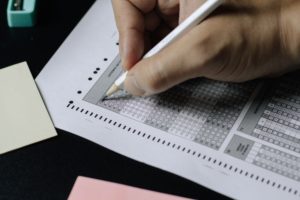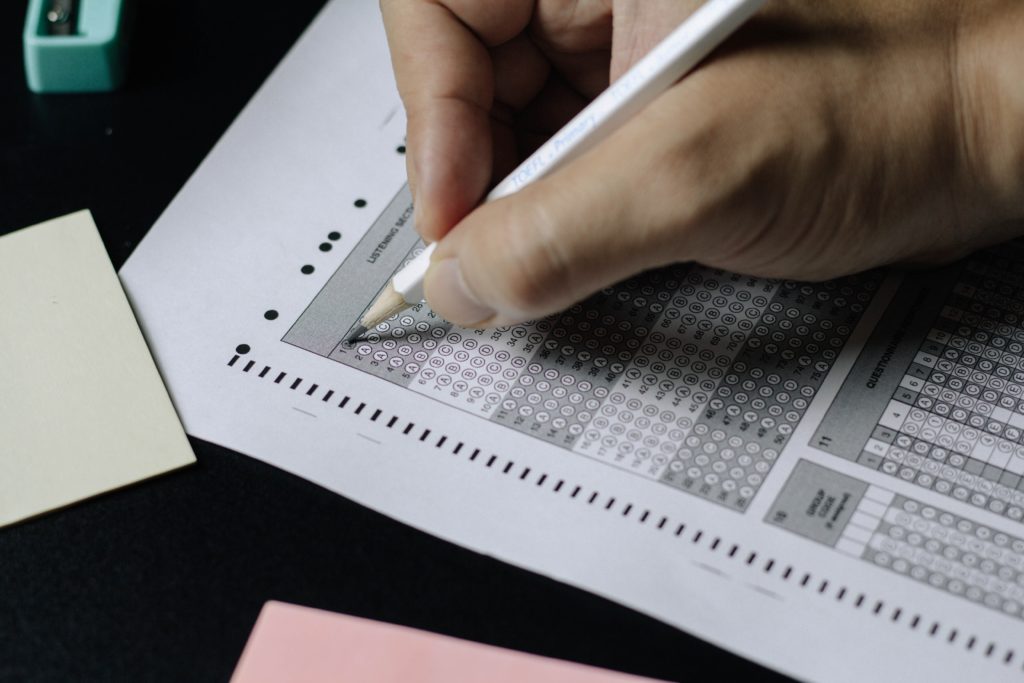By: Christian Schweitzer
The runaway freight train that is the American student debt crisis continues to accelerate, as borrowers now owe a collective $1.73 trillion in debt.[1] As President Biden and Congress press forward with retroactive reforms to cancel debt for certain limited classes of borrowers,[2] it seems worthwhile to return to conversations about forward-looking reforms to minimize new debt. One potential guardrail to new student debt is the Income Share Agreement (“ISA”),[3] a financing product that serves as an alternative to student loans by offering students educational funding in exchange for the student’s promise to pay the lender a fixed portion of their future income for a set number of years.[4]
Though the principles that underlie ISAs arguably date back to human capital contracts envisioned by free marketeer Milton Friedman,[5] their proliferation into the realm of higher education is relatively recent. In 2002, a Chilean company called Lumni created a fund to invest in students pursuing higher education, with the expected returns to be an agreed percentage of the students’ future income for ten years following graduation.[6] Since then, Lumni and others have expanded to the United States, and the ISA model has been adopted by nonprofit, for-profit, and government entities.[7] While ISAs are increasing in popularity, data on the ISA education financing market share is lacking.[8] Analyzing the client base of Vemo,[9] a leading education finance intermediary, as a proxy, researchers estimate that in addition to private ISA funds, roughly sixty colleges in the U.S. offered ISA financing as of July 2019, up from eight colleges in 2017.[10]
Advocates for the expansion of ISAs see them as more than an alternative to student loans but offering a host of other benefits, including equality of opportunity, student protections, information transparency, innovation, and student support.[11] As a quintessentially free-market device, these experts argue that ISAs open the doors of higher education to students of all racial and financial backgrounds, without the need for federal subsidies.[12] Further, ISAs can be more student protective than traditional private loans, because the risk of low post-graduate income or unemployment is allocated to the lender.[13] Because ISAs carry such low risks to students, they may be attractive to debt-averse students for whom higher education would be otherwise inaccessible.[14] Additionally, ISAs incentivize lenders to offer academic and career support to students, because students who go on to be high earners present the greatest return on investment.[15] Lastly, competition between lenders should encourage innovation in the delivery of financing and education itself, as investors will be more willing to dedicate dollars towards more venerable education providers.[16]
As ISAs have grown in popularity, they have also been subjected to a great deal of scrutiny, including from student’s rights organizations.[17] The harshest of perspectives describes the ISA arrangement as a modern-day indentured servitude because they create the opportunity for a borrower’s repayment to be much more than the value of their education.[18] Indeed, there are legitimate moral concerns created by allowing private funds and corporations to effectively create ownership interests in aspiring young professionals.[19] Additionally, there are practical concerns that ISAs are ripe for unfairness due to opportunities presented for unethical conduct by both lenders and borrowers.[20] Borrower exploitation of the system may manifest as either adverse selection, opting into an ISA knowing privately they intend to earn less than declared in the application process, or as moral hazard, where a borrower does not work as hard for economic success because earning more will lead to paying more to the lender.[21] Lender exploitation could arise by drafting unfair terms for the rate or duration of repayment, as well as inequality in selecting groups who are most often approved for funding.[22] Lastly, critics note that additional risks for investors in ISAs could lead to repayment ultimately being more expensive for successful students than traditional student loans. [23]
Potential weaknesses aside, a nationally representative survey found that 46% of individuals support ISAs to only 22% who oppose them.[24] Given this support and the utility of ISAs, what can regulators do to mitigate their harms and protect borrowers? Some ISA researchers have recommended comprehensive drafting of new regulations which balance controls against likely borrower and lender abuses, in a manner that attempts to anticipate new loopholes lending contracts could include without curbing the innovation that makes ISAs desirable.[25] On the contrary, borrower advocates have argued that ISAs operate similarly to traditional credit agreements and thus can be governed by existing consumer financial protection regimes at the state and federal level, such as the Equal Credit Opportunity Act.[26] Still, others have called for analysis on a case-by-case basis, advocating for simply categorizing ISAs as analogous to a type of traditional transaction and then regulating it under existing regimes. [27]
ISAs are not a one-size-fits-all solution to ongoing student debt issues in the United States. However, they can be a tool in the swiss army knife of policymakers that contributes to meaningful progress. Especially for lower-income and risk-averse students, ISAs can provide a pathway to higher education that traditional student loans do not. For ISAs to be most effective, regulators must continue to work towards solutions that leave the door open to lending innovation, while cutting off avenues for predatory practices. With proper oversight, the broader implementation of ISA funding can be an important piece of next-generation education reform.
[1] Abigail Johnson Hess, The U.S. has a Record-breaking $1.73 Trillion in Student Debt—Borrowers from These States Owe the Most on Average, CNBC (Sept. 9, 2021, 1:03 PM), https://www.cnbc.com/2021/09/09/america-has-1point73-trillion-in-student-debtborrowers-from-these-states-owe-the-most.html.
[2] Zack Friedman, Biden has Cancelled $11.5 Billion of Student Loans, but Here’s What This Means for Student Loan Forgiveness, Forbes (Oct. 12, 2021, 8:30 AM), https://www.forbes.com/sites/zackfriedman/2021/10/12/biden-has-cancelled-115-billion-of-student-loans-but-heres-what-this-means-for-student-loan-forgiveness/?sh=3a8546ea7fd7.
[3] Income Share Agreements, Student Borrower Prot. Ctr., https://protectborrowers.org/income-share-agreements/ (last visited Oct. 18, 2021).
[4] Id.
[5] Shu-Yi Oei & Diane Ring, Human Equity: Regulating the New Income Share Agreements, 68 Vand. L. Rev. 681, 685 (2015).
[6] Id. at 693–94.
[7] Id. at 693.
[8] Richard Price, Unlocking the Potential of ISAs to Tackle the Student Debt Crisis, Christensen Inst. 7 (Aug. 2019), https://files.eric.ed.gov/fulltext/ED603097.pdf.
[9] About Us, Vemo, https://vemoeducation.com/about-us/ (last visited Oct. 18, 2021).
[10] See Price, supra note 8, at 7.
[11] Miguel Palacios et al., Investing in Value, Sharing Risk: Financing Higher Education Through Income Sharing Agreements, Am. Enter. Inst. 1–2 (Feb. 2014), https://vtechworks.lib.vt.edu/bitstream/handle/10919/95112/InvestingValueSharingRisk.pdf?sequence=1.
[12] Id. at 7.
[13] Id. at 8.
[14] Id.
[15] Id. at 9.
[16] Id. at 8–9.
[17] See Income Share Agreements, supra note 3.
[18] Elliot Hannon, Is This Indentured Servitude or the New Venture Capital?, SLATE (Oct. 29, 2013, 10:45 AM), https://slate.com/business/2013/10/companies-look-to-loan-you-money-in-return-for-a-percentage-of-your-future-earnings.html.
[19] See, e.g., Ken Previti, The American School for Indentured Servants, RECLAIM REFORM (June 19, 2013), https://reclaimreform.wordpress.com/2013/06/19/the-american-school-for-indentured-servants/ (discussing how corporations are legally indenturing college students as a creative means to profit).
[20] See Oei & Ring supra note 5, at 708.
[21] Greg Madonia & Austin Smith, My Future or Our Future? The Disincentive Impact of Income Share Agreements, Mia. Univ. Farmer Sch. of Bus. 1, 21 (2016).
[22] Stephen Hayes & Alex Milton, Solving Student Debt or Compounding the Crisis? Income Share Agreements and Fair Lending Risk, Student Borrower Prot. Ctr. 4–5 (2020), https://protectborrowers.org/wp-content/uploads/2020/07/SBPC_Hayes_Milton_Relman_ISA.pdf.
[23] See generally Jeff Schwartz, The Corporatization of Personhood, 2015 U. Ill. L. Rev. 1119 (2015) (explaining that ISA fees and other social or transactional costs can add up to make the arrangement burdensome for the borrower).
[24] Jennifer Delaney et al., Perceptions of Income Share Agreements: Evidence from a Public Opinion Survey, 45 J. Edu. Fin. 97, 106 (2019).
[25] Dubravka Ritter & Douglas Webber, Modern Income-Share Agreements in Postsecondary Education: Features, Theory, Applications, Fed. Rsrv. Bank of Phila. 34 (Dec. 2019), https://www.luminafoundation.org/wp-content/uploads/2020/01/modern-isas.pdf.
[26] Hayes & Milton, supra note 22, at 9. Benjamin Roesch, Applying State Consumer Finance and Protection Laws to Income Share Agreements, Student Borrower Prot. Ctr. 7–10 (Aug. 2020), https://protectborrowers.org/wp-content/uploads/2020/08/ISAs-and-State-Law.pdf.
[27] Oei & Ring, supra note 5, at 709–10.





